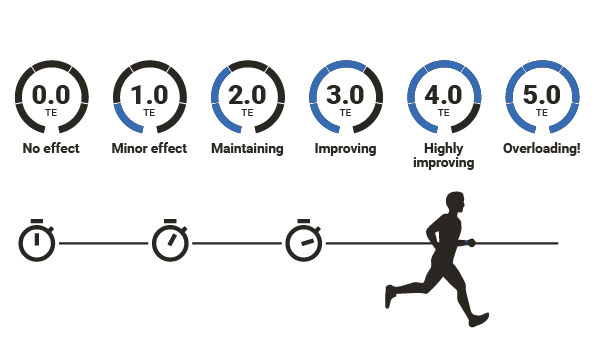
Running is a powerful and often exhilarating experience. Inspired beginners often run faster, farther, and more often than they should. This often creates problems down the road that can prevent you from brining. When dealing with an experience as powerful as running, what seems right or feels good in the moment can have lasting, negative consequences. The physical and mental cost of pushing your body into overload can be overwhelming.
When you’re sore or exhausted, it’s easy to skip one training session, then another, then another. Sudden increases in pace, distance, and frequency all increase risk of injury. An injury early in your running career can be a major setback and can even set off a chain of events that prevent you from pursuing your new hobby altogether.
Complicating matters is the fact that many people who take up running view it as a path towards achieving personal goals related to fitness, weight, and body image. These are powerful motivating factors and it is both normal and expected to want discernable progress as quickly as possible.
Naturally, you must challenge yourself if you want to make a difference, but just because a workout was painful doesn’t mean it will take you where you want to go. It takes patience, but gradual improvement is the key to achieving your long-term goals.
Lacking experience, novice runners are prone to mistakes. It’s easy to fall into the trap of believing that driving yourself to exhaustion is the goal, or the only way to get results.

One valuable insight can make all the difference, but only if you take the time to find out what it means and how to use it to understand and manage your performances. This insight comes in the form of Training Effect feedback and is readily available on a large and growing number of popular smartwatches, fitness trackers, multisport GPS devices.
Can your running watch calculate your Training Effect? Find out.
The Key to a Better, More Confident Approach to Training Decisions
Long utilized by endurance specialists to fine tune workout programs and sports scientists working with professional athletes, Training Effect is a single number that updates in real time throughout your run and delivers insight that’s always tailored to you, personally. It reveals how your body is impacted by your current run and predicts the influence each activity your record will have on the development of future performance capacity and cardiorespiratory fitness.
One advantage of Training Effect is that it takes a lot of complex information about your performance and reduces it into a single number. The trick for beginners, however, is understanding what that number means.
Unlocking the secrets of Training Effect requires a bit of insight into how your body works to improve performance over time. Cardiorespiratory fitness is measured in terms of VO2max and is describes how effective your heart, lungs, circulation system and muscles are at importing oxygen into your body, transporting it to your muscles, and utilizing it to help supply the energy you need perform.
When you challenge yourself effectively, your body responds by adapting in ways that better prepare you to tackle the next similar challenge. In order to progress from one level to the next, you need to ensure that your activities are sufficiently challenging for you and to give yourself adequate time to recover between workouts. The physiological adaptations that help you improve can only take place during the downtime between workouts, not during the workouts themselves.

Why Is Training Effect Important for Me, Personally?
So, what makes Training Effect such an important insight? The analysis behind Training Effect is essentially a 2-part process. Each part plays an important role in the meaningfulness of the feedback you receive.
The first step involves quantifying the total impact of your activity. This is achieved by first translating your performance data into EPOC, which is an acronym for excess post-exercise oxygen consumption. This is the metric physiologists use to describe the degree of homeostasis disturbance achieved through your efforts. In laymen’s terms, it is describing how far you managed to push your boundaries.
Once the total impact of your activity is calculated, it is necessary to interpret what that level of exertion means for you personally. A run that set your heart racing and lungs burning at the start of your running career might be just a jog in the park after you’ve been running regularly for a while. Earlier that run likely had a highly stimulating and improving impact on your fitness, later it may have just helped you maintain your current level or even simply helped promote recovery.
To ensure that your Training Effect is giving the right feedback for you, personally, the total impact of your activity (i.e., EPOC) is intelligently interpreted based your current cardiorespiratory fitness level (VO2max) and activity history over the past few weeks. This is how the raw data from your activity is elegantly translated into a single number that will always be meaningful for you regardless of your current fitness level or where you are in your training program.
Real-time Feedback Means You Can Go Hard Without Overdoing It
Most running watches that offer Training Effect feedback can also be set up to show your current Training Effect in real time. This means that by watching how your Training Effect score builds over the course of a run you learn guide and tune your efforts based on this information.

Some days call for a light effort that will keep you active and promote recovery. Other days are when you need to push your limits and make sure that your run packs enough of a challenge to trigger the adaptation process. One thing that you generally want to avoid is pushing all the way into overload, which can quickly become counterproductive and can ultimately destroy your progress if done too often.
With Training Effect feedback as your guide, you can build towards success with confidence, knowing that each step along the way was the right one. Understanding what the feedback means will help ensure your running career is a long and productive one. By training smart and not overdoing it, you will stay motivated, reduce your chance of getting injured, and achieve your goals.
Note: This article is primarily written to help introduce new runners to the world of physiological insights available from today’s most popular running watches. Training Effect as described in this article refers specifically to Aerobic Training Effect. A growing number of more advanced training devices available today also provide insight into how dynamic changes in your performance will develop anaerobic performance capacity. Anaerobic Training Effect is a valuable tool for understanding the impact of HIIT sessions and other types of interval runs and sports performance.
If you liked this article, you should subscribe to our mailing list
You might also be interested in

The Bigger the Training Effect, the Better?
You need to push your limits to improve your VO2max and get Aerobic Training Effect of 3.0-5.0. However, exercise can be very useful, although your TE value isn’t that high. The variation is the key to success.

The Dose Makes the Medicine – Moderate Physical Activity Improves Mental Health
Regular exercise is good for you body and mind. However, more training isn’t always better and exercising too much might have a negative impact on mental health. Firstbeat Training Load gives essential insight into the proper amount of exercise.
